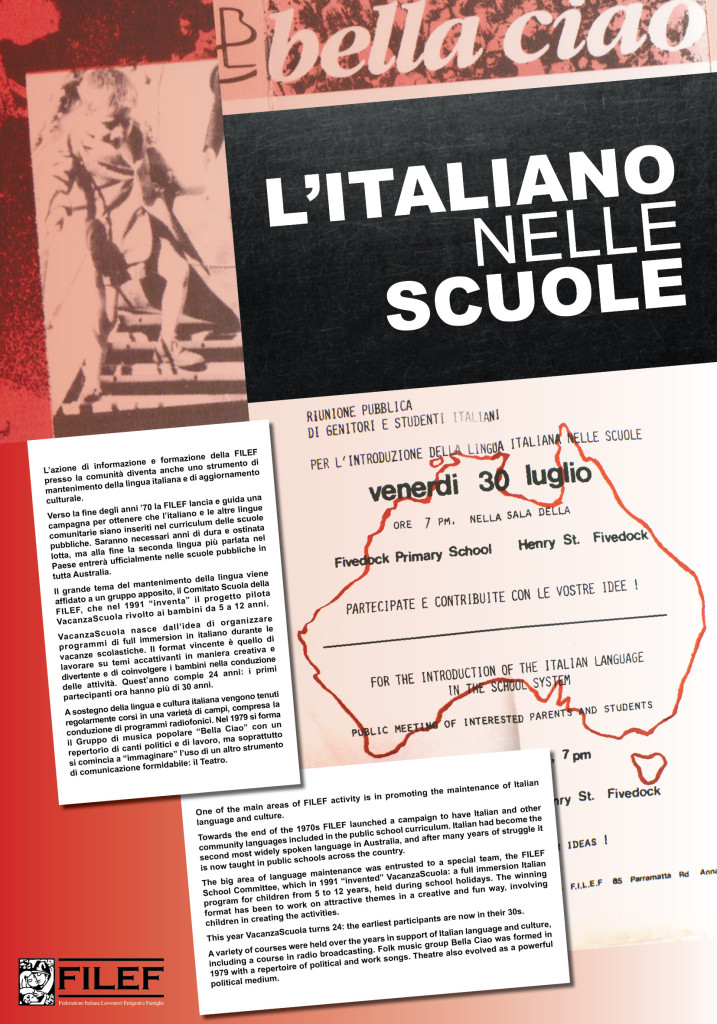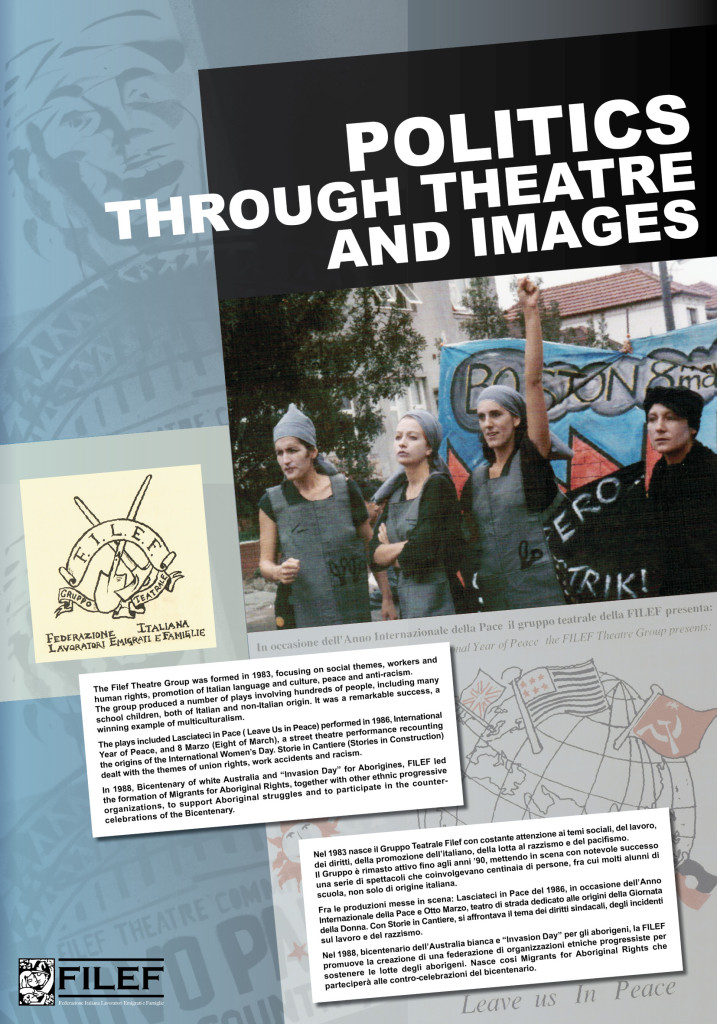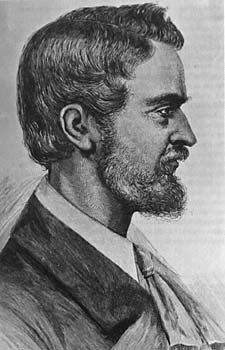The Heritage Festival 2013 – Community Milestones has been a huge success with over 400 people attending events in Annandale, Balmain and Leichhardt. Opening on the 18th April FILEF ( Federation of Migrant Workers and families ) launched their exhibition with 150 attendees. Speeches from Franca Arena, Frank Pennuci, and Mayor Darcy Byrne were well received and the 40th Anniversary celebrations combined with the retrospective exhibition gave historians, students and the wider community much to learn, reflect and embrace around the milestones of this socially and politically active community group. FILEF welcomes all who are interested in Italian language, culture and social issues. Filef formed in 1972 Its key objective is to promote an Australia that recognizes the value of multicultural origins and cultures of all Australians. The exhibition displays demonstration marches in 1970s and 1980s for Women’s rights, workers rights, Migrant and Indigenous rights. Some of their achievements include successfully launching the Italian Language being integrated into the Public School system across Australia. Their current program is aimed at primary school children (K-Yr 6) Italian-Australians or with a basic understanding of Italian, to activate and develop their language skills in Italian. The exhibition also contained photographs publications, film and plays. The great news is that Leichhardt Library will be inheriting all of the FILEF material to be made available to future generations. This collection will be held in the Balmain Library archives and can be viewed by appointment. 150 historic images will also be made available online through the Library Online catalogue.
Some of the posters on the main activities of FILEF over the last 40 years including “Know your Rights”, Migrants Rights, Italian Language Vacation programmer and Focus on the environment and Migration Issues.
 Historian Gianfranco Cresciani and author of “Trieste Goes To Australia” (2011) ” The Italians of Australia” (2003) “ Transfield the First 50 years” (2006 ) Is currently undertaking writing a comprehensive historical account of 40 years of FILEF. Keep posted for the release.
Historian Gianfranco Cresciani and author of “Trieste Goes To Australia” (2011) ” The Italians of Australia” (2003) “ Transfield the First 50 years” (2006 ) Is currently undertaking writing a comprehensive historical account of 40 years of FILEF. Keep posted for the release.








